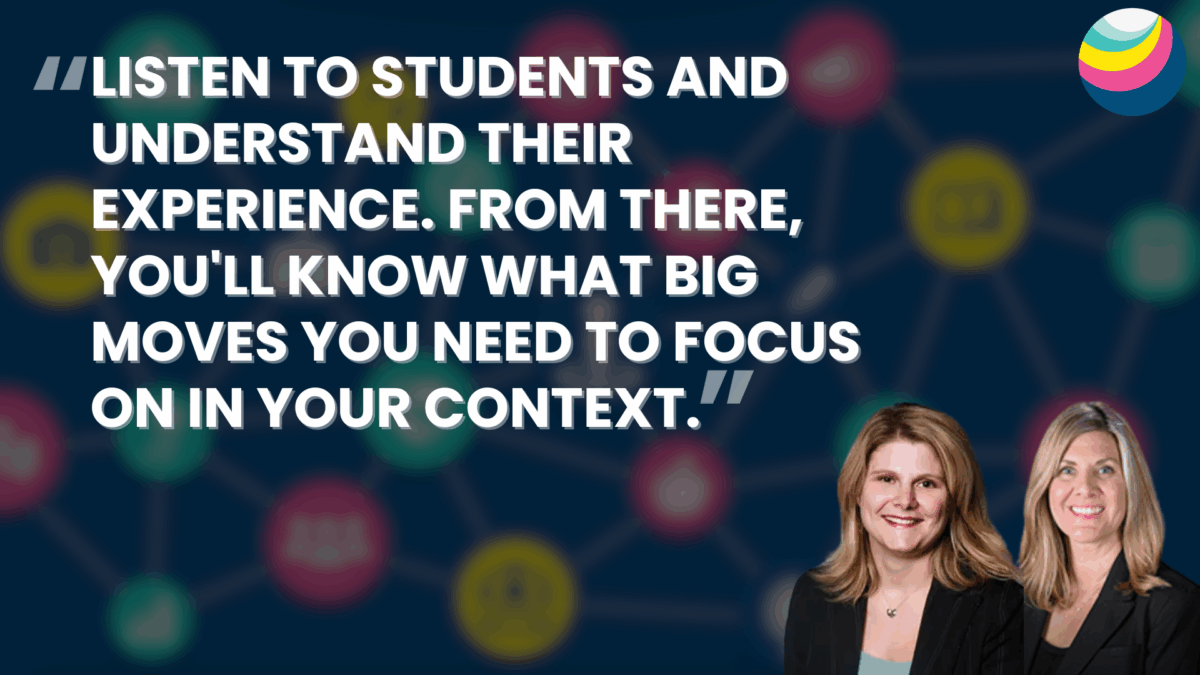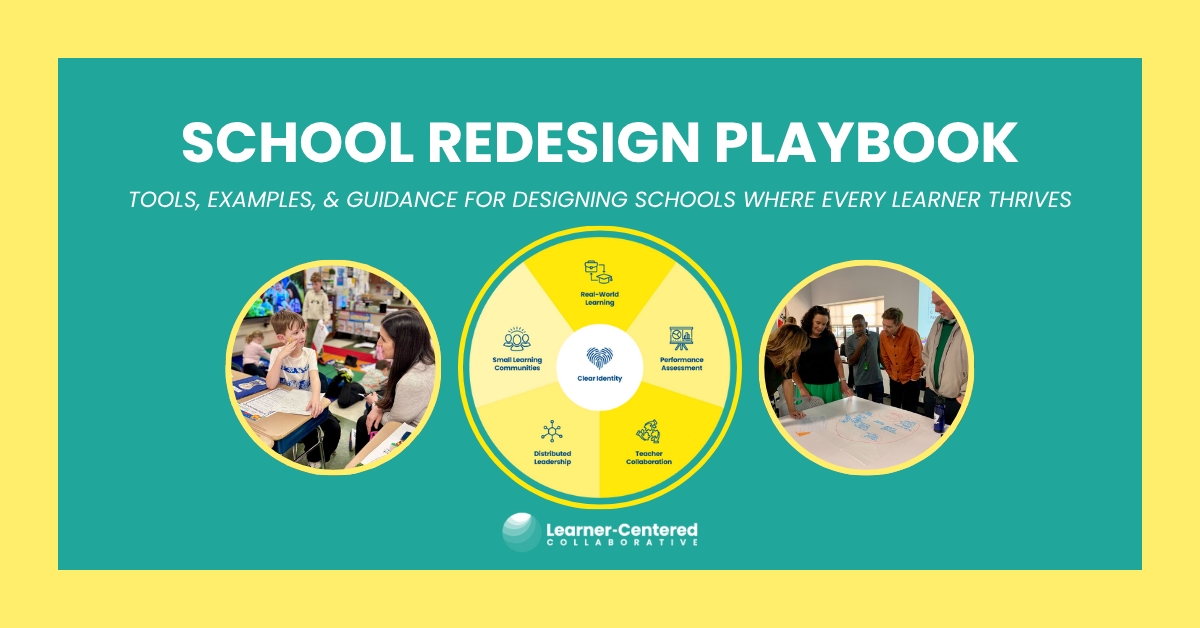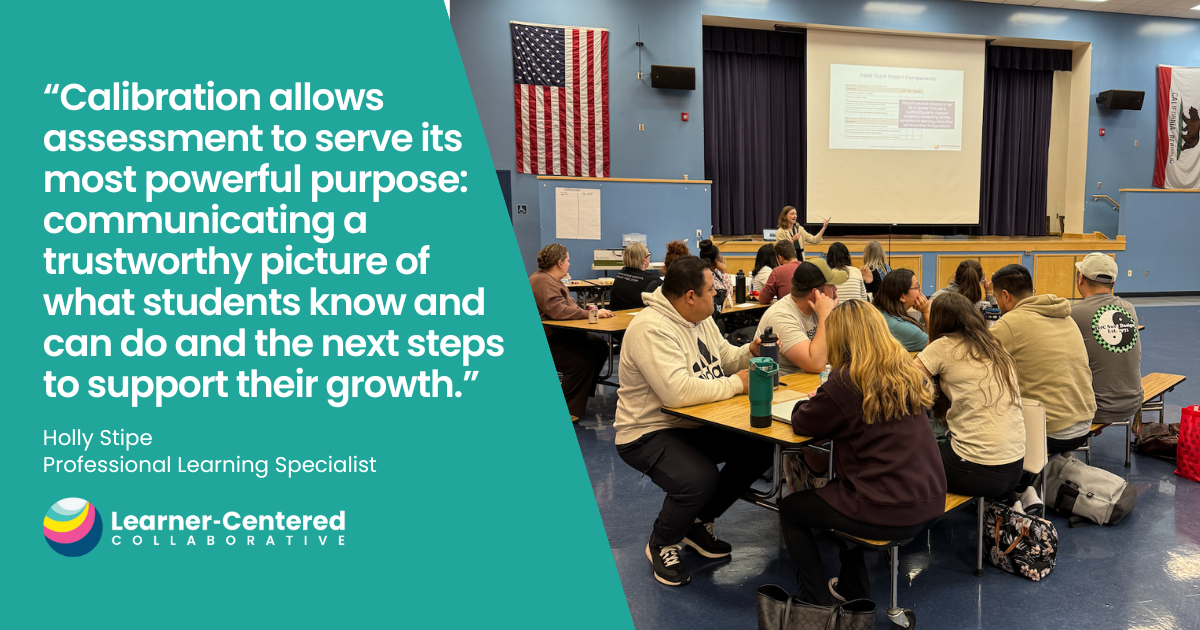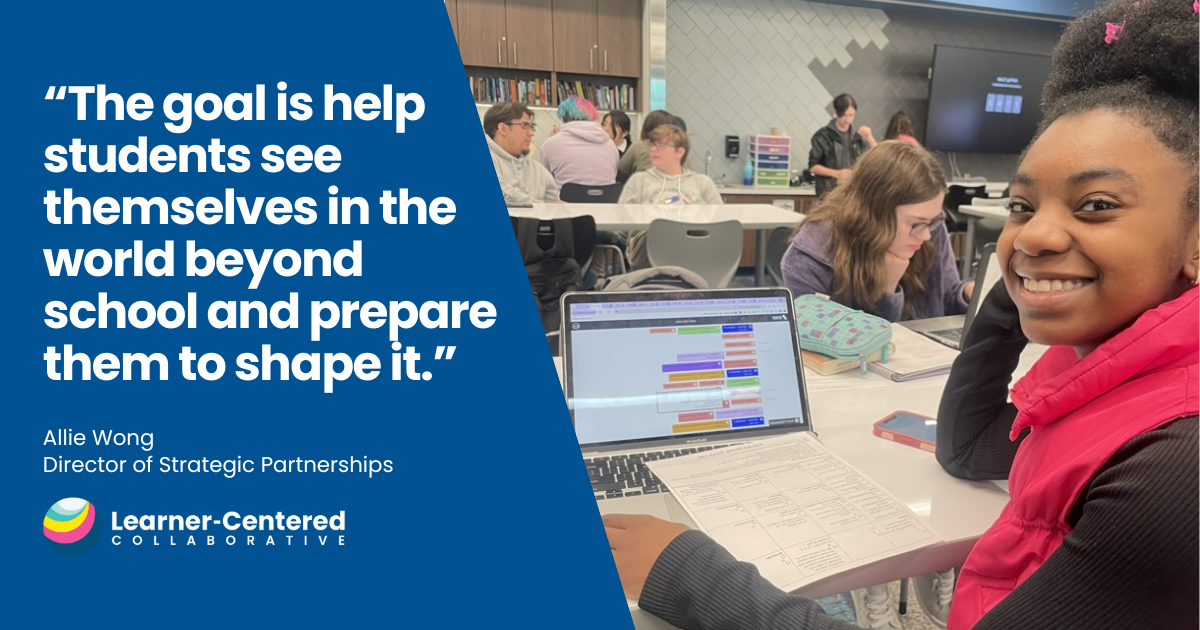Beyond Conventional Metrics: Telling a New Story Through Tiers of Data

School and district leaders are custodians of a future that demands diversity in our measures of success, mirroring our dedication to whole-learner outcomes and the unique visions that drive our schools and districts. Unfortunately, the school-centered system has narrowed the definition of success in such a way that innovative ideas struggle to get off the ground because we tend to evaluate success based on conventional metrics such as test scores.
Over the past few months, Katie Martin and I have written about why we need to broaden our perspective on what success looks like in our schools and districts. We’ve introduced the notion of “Accountability Plus” and the utility of scorecards as frameworks to encapsulate a school’s identity and aspirations.
Continuing this dialogue, I want to delve into the practical application of scorecards, offering a concrete method to visualize and evaluate the multi-dimensional aspects of educational success.
The Tiers of Data Approach
A scorecard is a succinct, one-page representation of your school or district’s desired outcomes, success metrics, data sources, and current status. To identify the relevant success metrics, a tiered-data approach can open up new ways of talking about what we could and should measure.

When working with schools and districts, we introduce four tiers of data that ascend from Activity Metrics that focus on engagement and participation to Impact Metrics that include sophisticated quantitative and qualitative evaluations. A mix of all four tiers enables schools and districts to take meaningful action on initiatives at all maturity levels and allows a story to be told that is meaningful and relevant to every stakeholder—from teachers and administrators to prospective families to local business and community leaders to students.
It can be difficult as a school or district leader to include activity, feedback, and observation metrics in their scorecards because external accountability systems are focused on impact measures. Why would we measure things that aren’t prioritized by our sources of funding?
This is the kind of question the school-centered system has made normal when it should be considered anything but normal. If we want to center learners by design, we have to shift our beliefs about what metrics of success matter and to whom.
Understanding How to Bring the Data to Life in Your Community
When a scorecard is aligned to the vision, mission, and values of a school or district and emphasizes metrics across all four tiers, a cultural shift occurs internally and externally.
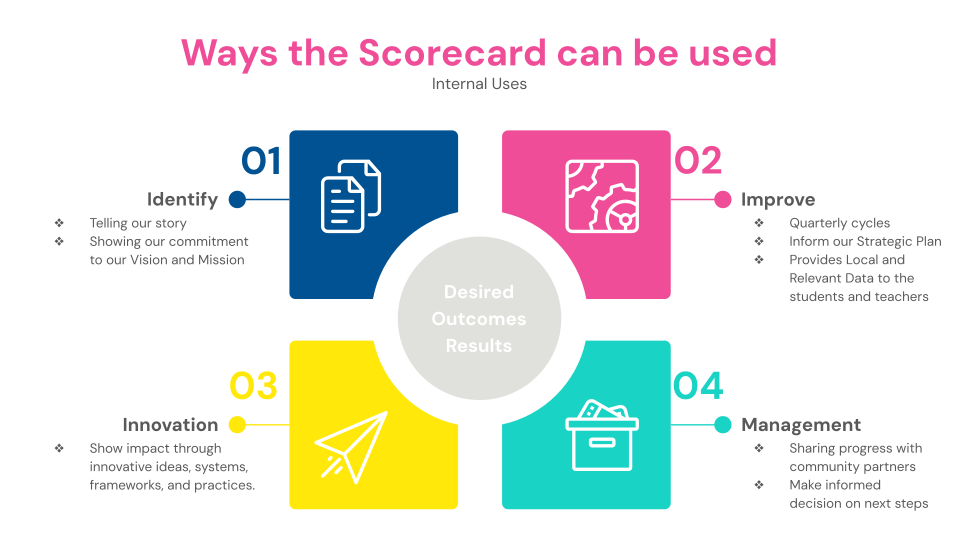
In practice, the scorecard is far more than a mere aggregator of data; it serves multiple strategic functions:
- Storytelling: By correlating activities directly to the school’s vision and mission, the scorecard narrates the commitment to those foundational principles.
- Continuous Improvement: It frames the journey in actionable cycles, using data to not only inform but actively steer the school’s strategic planning.
- Innovation: As schools introduce new practices, the scorecard highlights these pioneering steps, showcasing the evolution from activities to measurable impact.
- Management and Communication: For leaders, it becomes an instrument of transparency and dialogue, enabling the sharing of progress with community stakeholders and guiding informed decision-making.
Scorecards and Tiers of Data as Catalysts for Change
By leveraging scorecards effectively, school and district leaders can tell a richer, more authentic story—one that paints a full portrait of their institutions’ endeavors and triumphs. It’s a story that doesn’t just recount actions but revels in progression, from the initial activities to the transformative outcomes that truly resonate with a community’s ethos.
This article is not just about advocating for a multifaceted evaluation tool; it’s an invitation to journey through the tiers of data within the scorecard’s structure, uncovering the narratives of growth and success that every educational leader seeks to articulate. It’s time to celebrate our educational narratives with the richness and depth they deserve.
